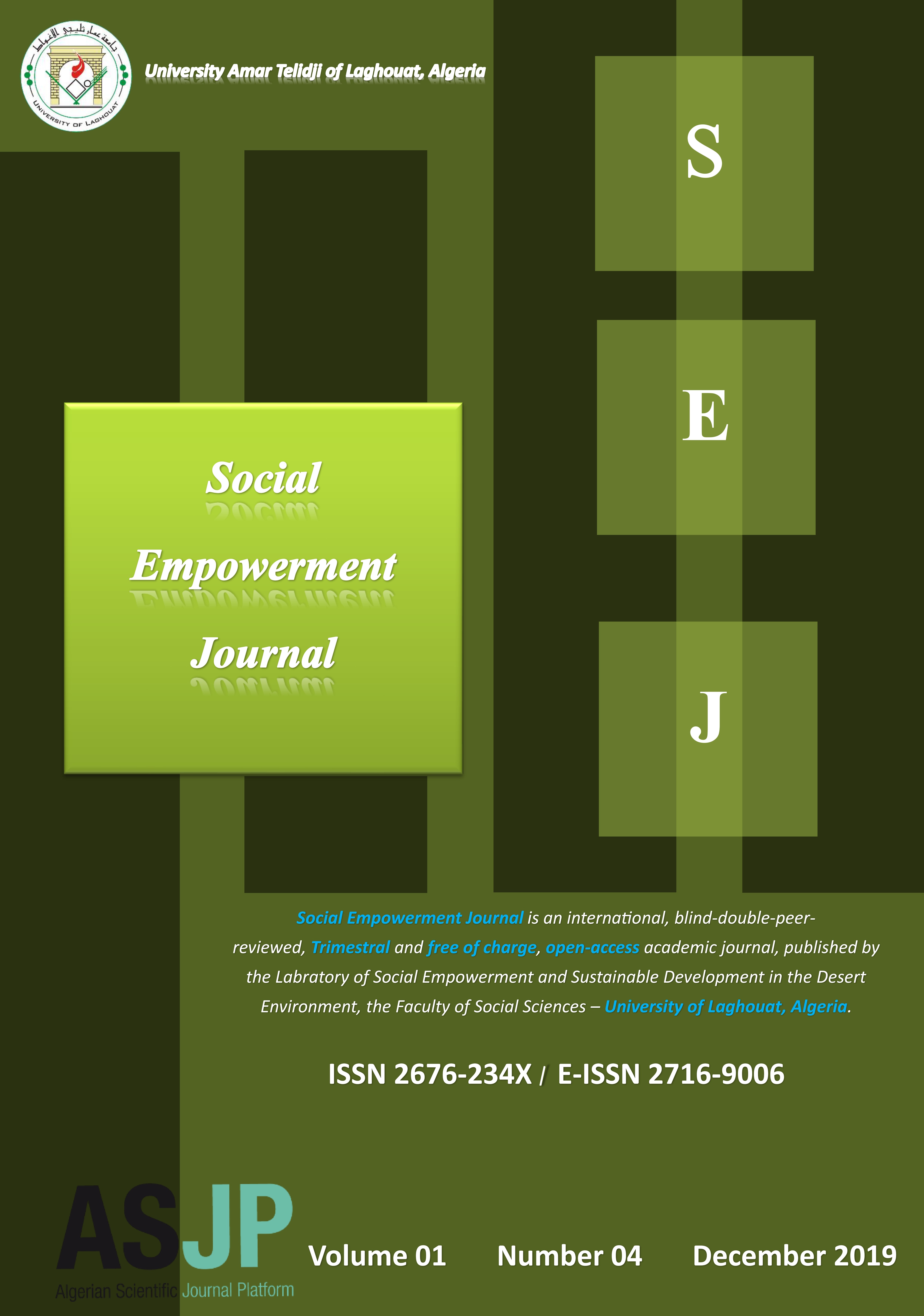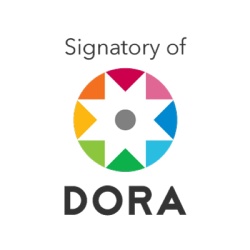The Problems of the Steppe Environment in Algeria
مشاكل البيئة السهبية في الجزائر
Abstract
The issue of the environment is one of the important subjects which have dominated the intellectual concerns at the present time which is witnessing a significant deterioration of the natural environment, which would cause real dangers to all humanity. Therefore, we seek through this paper to shed light on one of the important environmental areas located in Algeria, namely the steppe environment and this by addressing its location, characteristics and importance, and identifying the nature of the economic activity prevailing in the region and trying to reach the most important problems of the steppe environment in Algeria as well as efforts the Algerian government in eliminating its problems and preventing environmental problems in general.
Downloads
References
- Arabic references in English:
Ibn Manzur, (2006). Lisan al-‘Arab [The Language of the Arabs], Vol. 1, edited by Khalid Rashid al-Qadi. Beirut: Dar Subh Edisoft.
United Nations Convention to Combat Desertification (1999). Conference of the Parties, Third Session. United Nations.
Malha, A. (2000). Al-Rihanat al-Bi’iyyah fi al-Jaza’ir [Environmental Challenges in Algeria]. Al-Najah Press, Ben Aknoun, Algeria.
Bachir, B. (2013). Tadhawwur al-Bi’ah al-Sahbiyyah wa Ta’athiruha ‘ala Watirat al-Tahdher: Halah Madinat Massad [Desertification and its impact on urbanization: The case of the city of M'sila]. Master's thesis, Department of Geography and National Planning, Houari Boumediene University, Algeria.
Bouzaid, B., & Shamani, A. (2014). Ta’athir al-Tasahur ‘ala al-Huwiyyah al-Fardiyyah wa al-Jama‘iyyah li-Sukan al-Sahhab min al-Badu al-Rahil [The effect of desertification on the individual and collective identity of the nomadic Bedouin in the steppes]. Second International Conference on "Traditional and Modern Social Fields and the Production of Individual and Collective Identity in Algerian Society," Department of Sociology and Demography, Kasdi Merbah University, Ouargla.
Official Journal of the Algerian Republic. (2016). Issue: 67. Algeria.
Cortina Segar, J., et al. (2012). Al-Usus al-‘Ammah li-I’adat al-Tahili al-Bi’iyyah li-Sahhab al-Hilfah [General Principles for Environmental Rehabilitation of the Hifad Steppes]. Translation by Meshish Draq. Spain: International Union for Conservation of Nature and Natural Resources.
Bouskar, R. (2015-2016). Mushkilat al-Bi’ah fi al-Jaza’ir min Munsarif Iqtisadi [The Environmental Problem in Algeria from an Economic Perspective]. PhD thesis, Department of Economics, Mohamed Khider University, Biskra.
Razzak, A. (2007-2008). Aaliyat Tamwil Siyassat Himayat al-Bi’ah fi al-Jaza’ir [Mechanisms for Financing Environmental Protection Policies in Algeria]. Master’s thesis, Institute of Economic Sciences and Management, Mohamed Khider University, Biskra, Algeria.
Salamen, R. (2005-2006). Al-I’lam wa al-Bi’ah [Media and Environment]. Master’s thesis in Media and Communication, Faculty of Political Science and Media, University of Algiers, Algeria.
Khalil, S. M. (n.d.). Mushkilat al-Tasahur: Asbabaha wa Asaleeb Halah [Desertification Problem: Its Causes and Solutions]. Retrieved from https://drsabrikhalil.wordpress.co
Amer, S. D. (1982). Al-Qanun al-Dawli li-l-Bi’ah [International Environmental Law]. Faculty of Law, Cairo University.
Talibi, M. (2013-2014). Nizam al-Muhafazah al-Samiya li-Tatwir al-Sahhab [The High Commission for the Development of the Steppes]. Master’s thesis, Department of State and Public Institutions, Faculty of Law, University of Algiers 1, Algeria.
‘Allam, M. (1987). Al-Qiyam al-Bi’iyyah lil-‘Atil [Environmental Values for Children]. Journal of Development and Environment, Issue 12.
Helou, M. R. (2002). Qanun Himayat al-Bi’ah fi Duw al-Shari’ah [Environmental Protection Law in Light of Islamic Law]. Mansha’at al-Ma’arif, Alexandria, Egypt.
Ministry of Agriculture, Rural Development, and Fisheries. (2016). Message Toward Vision on the Economic Valuation of Steppeland Pastures and Modernizing Livestock Breeding Systems.

This work is licensed under a Creative Commons Attribution-NonCommercial 4.0 International License.




















